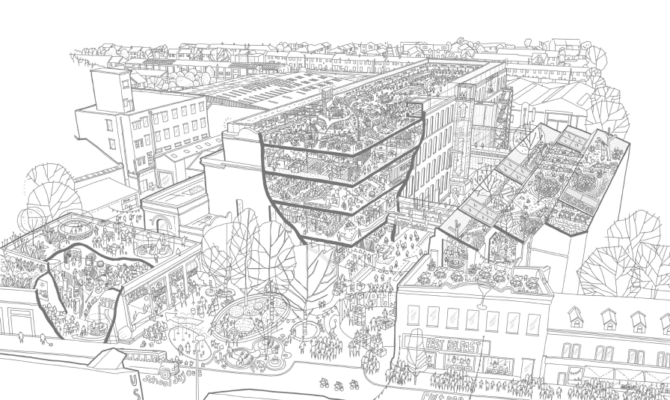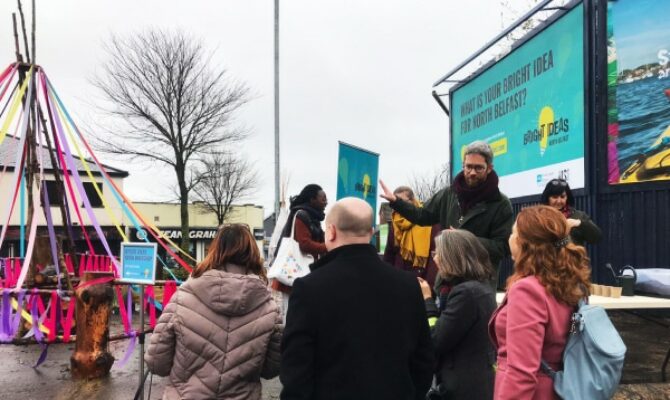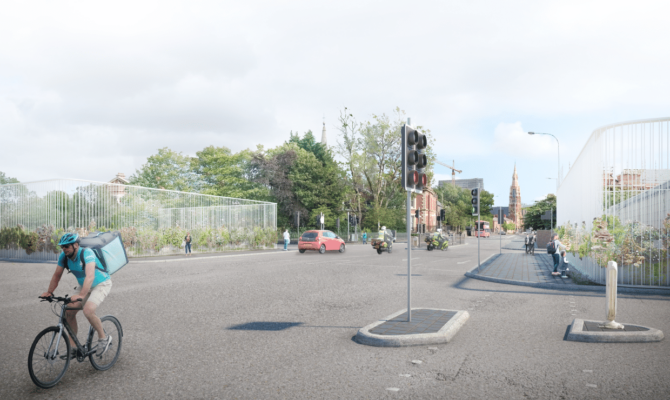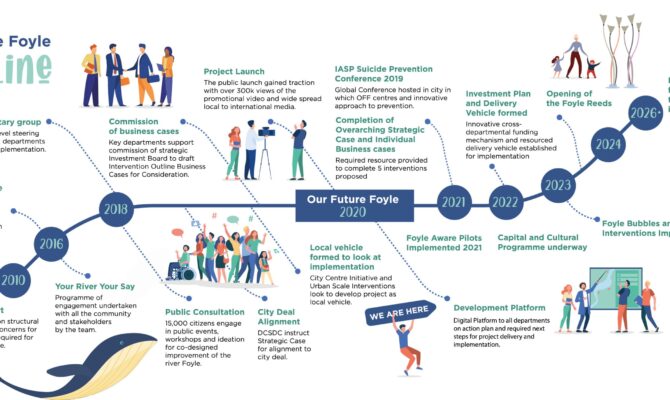Urban Scale Interventions
Company Biography
Through creative engagement, impactful design and quality delivery, we help cities, governments and organisations to improve the lives of the people they serve. From reframing highstreets, to new models of education, playful interventions, regenerative tourism or improved community wellbeing, we cut through the red tape, take risk, see the bigger picture and challenge the status quo.
We’re a purposely broad team of researchers, architects, designers, strategists, filmmakers, producers, planners, technologists and makers. The perfect balance of inquisitive minds to push new ways of thinking and experienced hands to deliver tangible interventions. Being broad ensures the outcome of our projects are defined by insights and opportunities, not by the skills of the team.
We use these skills to change policy, deliver physical interventions, shape places, tell stories and create technology for people . We communicate complexity through visions, film and stories. Believing the best innovation happens at the intersection between people, place and purpose.
Discipline
Architecture, Digital, Research
Location
Northern Ireland
Employees
10-25
Work showcase

Portview Trade Cente, 2021
Portview Trade Centre is located to the East of Belfast on the Newtownards Road, just a 10-minute drive from Belfast City Centre. Originally a spinning mill built in the early 1900s, it was ahead of its time in both its employment of women and the inclusion of both traditional creative and innovative technologies. Once a key feature of a vibrant thriving community, this geographical area is now one of the most deprived in Northern Ireland, with high rates of poverty and only 8% of people aged 16 and over continuing onto further education.
Urban Scale Interventions have worked with the charitable organisation who owns Portview to bring the whole site into use, through establishing an Education, Tourism, Resilience, Heritage and Employment masterplan. The site which is currently home to 47 small businesses occupy under half of the site. Many of these businesses are leaders in their respective fields and some of the most forward-thinking entrepreneurs in Northern Ireland. The plan is to double the number of tenants and people on site attracting both high profile tenants and smaller creative companies.
Through the adoption of a social tenancy and addition of a project-based learning education hub to the site, the ambition is to become a leading example of how heritage spaces can become carbon-neutral sites and embed social value. Our long-term ambition within the project is to develop the spaces on the site. By fully occupying the buildings on-site with projects involving specific social objectives and innovative development with education and training outputs we hope to build a culture of investment into the local community, and into Belfast as a whole through education and industry development.
The initial work and forward thinking plans has recently been recognised with a large Heritage Lottery Grant to further develop the plans and ambitions for the site.

Healthy Places, 2020
In conjunction with the Public Health Agency Northern Ireland, Healthy Places seeks to collect and share “Bright Ideas” for North Belfast through creative conversations and community engagement.
Focused in the neighbourhoods of Ardoyne and Ballysillan, ‘Healthy Places’ seeks to bring the community to the core of development and regeneration. Together, the dual projects of ‘Street Activation’ and ‘Participatory Communities’ have come under the umbrella of “Bright Ideas Belfast”, with USI currently carrying out the initial public consultation, asking communities and individuals for their Bright Ideas for North Belfast through workshops and engaging street activities.

Relink, 2019
Relink is a climate friendly vision for transforming the Westlink and M2 bridges to help relink Belfast. The project has been developed since 2019 through an extensive community and statutory stakeholder engagement process in association with the Public Health Agency.
The aim of Relink is to improve the health and social well-being of everyone using the Westlink and M2 bridges, through rejuvenation and animation of its footbridges. The bridges are being reconceived as shared positive spaces that focus on connectivity and climate resilience with the primary focus of improving wellbeing in the area.
Four pilot projects for Clifton Street, Peter’s Hill, Divis Street and Grosvenor Road bridges to create more people-centred and healthier places that connect north and west Belfast to the city centre. Each bridge has its own unique personality and identity codesigned by local communities around themes of water, light, growth and pollution.
The project is currently in the deliver phase with outcomes expected in the coming months. Check out www.relinkbelfast.com for more information.

Our Future Foyle, 2018
Our Future Foyle is a transformative, innovative cultural and health intervention focused on the River Foyle in Derry/Londonderry. The project has been developed over the past three years through extensive community and stakeholder engagement in association with the Public Health Agency, Health Agency NI and Helen Hamlyn Centre for Design. Two of the three outcomes include:
Foyle Reeds
The Foyle Reeds seek to be a cultural installation with the dual purpose of a suicide prevention mechanism on the Foyle Bridge. This installation would be the largest public sculpture in Northern Ireland and aims to develop and inform suicide prevention measures for cities worldwide. Linking the Atlantic Way and Causeway Coastal routes this bridge also links Ireland and Northern Ireland. Utilised and developed to its full potential, the Foyle Bridge has the ability to enhance tourism of the wider area, following the success of the Peace Bridge and the landmark that it has become in the city of Derry.
Foyle Bubbles
The Foyle Bubbles; multi-use spaces, designed to be placed on the river banks for creative public engagement with each pod being used by local creative and commercial enterprises within the city. With mental health training and education an essential part of the residency, the occupiers will be a public-facing network of support and response for both the people they are engaging with path and with incidents along the riverside. The potential of the Foyle Bubbles is unlimited for tourism and the success of the engagement. The ability for a pod to answer questions, play songs and monitor the pedestrian flow is an engagement tool able to revolutionise tourism and how the public engages along the river.
More can be found about this project on the website: www.futurefoyle.org
